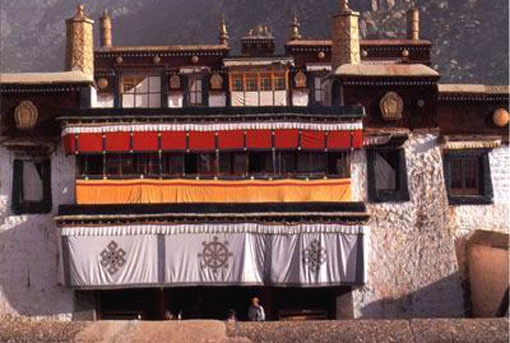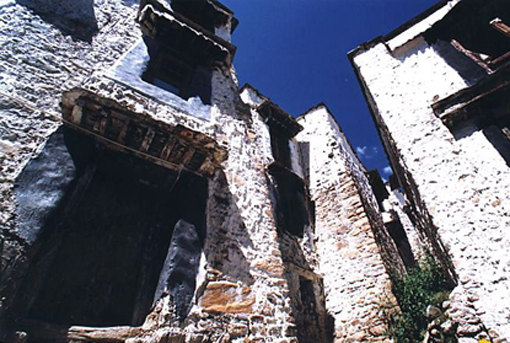|
||||||||||||||
|
||||||||||||||
Drepung MonasteryDrepung MonasterySituated at the foot of the Mountain Gambo Utse, 5 kilometers (3.1 miles) from the western suburb of Lhasa, the Drepung Monastery is known as the most important monastery of Gelugpa in Tibetan Buddhism. It is considered one of the 'three Great Monasteries' (the other two are the Ganden Monastery and the Sera Monastery. Covering an area of 250,000 square meters (299,007 square yards), it held 7,700 monks in total and possessed 141 fazendas and 540 pastures in its heyday, and is the largest-scale monastery among the ones of the same kind. Seen from afar, its grand, white construction gives the monastery the appearance of a heap of rice. As such, it was given the name Drepung Monastery which, in the Tibetan language, means Monastery of Collecting-Rice.
The monestary was established in 1416 by Tsong Khapas disciple Jamyang Qoigyi, who was versed in both Esoteric and Exotoric Buddhism and became the first Kampo there. With the support of plutocrats, it developed as the richest monastery of Gelugpa and became the mother temple of Dalai Lamas. In 1546, the third Dalai was welcomed as the first Living Buddha into the monastery. At the invitation of Mongolias king, he went to Qinghai Province to preach. He was dignified with the title the third Dalai Lama the first and second Dalai were entitled, too. It is the very place that the second, third, and the fourth Dalai Lama held the Sitting-in-Bed Ceremony, as well as the residence of the fifth Dalai before his nomination by the government of the Qing Dynasty (1644 - 1911).
The organizational hierarchy of the monastery is rather complex. The main branches of the organization consist of Coqen, Zhacang, Kamcun, and Myicun. Coqen is in the highest position, to which Zhacang belongs, and Kamcun is under the jurisdiction of Zhacang, with the Myicun as its subordinate. Monks belonging to respective Zhacangs cannot interblend with each other.
|



